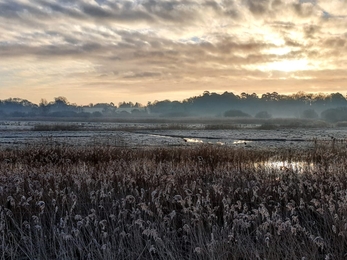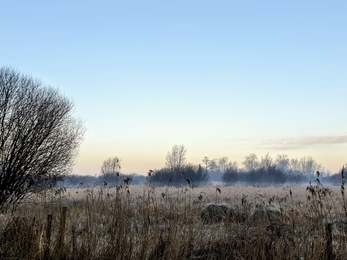Weekly wild news from our reserves – 5 March
Oulton Marshes – Dan Doughty
This chiffchaff has been singing its heart out at Oulton Marshes. Some chiffchaffs stay all year-round, but most migrate here from Africa in early spring.
The first rose
Primroses get their common name from the Latin 'prima rosa', meaning 'first rose' to describe their early flowering. These beauties were spotted at Captain’s Wood by Sites Manager Andrew Excell, who said the reserve also sounded like spring with melodious birdsong and woodpeckers drumming.
Primroses at Captain’s Wood – Andrew Excell
Otter prints
Even though otters are elusive and can be hard to spot, they often leave signs of their presence. Look out for otter poo, otherwise known as spraint, and for their tell-tale footprints in the mud, like these seen at Hen Reedbeds.
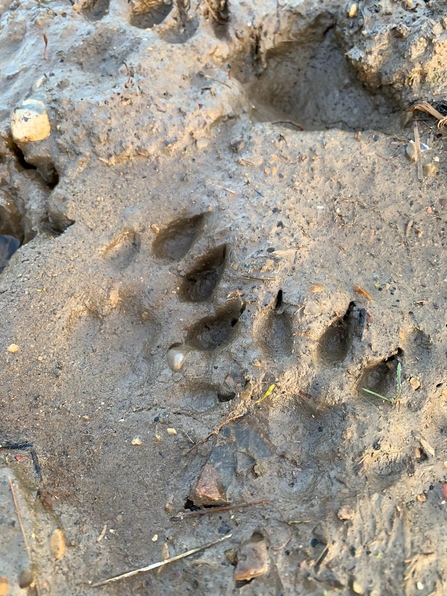
Otter prints at Hen Reedbeds – Sarah Groves
Cherry plum blossom
Ellen Shailes, Broads Warden, spotted this cherry plum tree (also known as myrobalan and fruits sometimes called mirabelles) starting to blossom at Lound Lakes this week. A variety of fruiting trees grow on the nature reserve, as Andrew Hickinbotham, Lound Lakes Warden, describes ‘This is cherry plum and is widely naturalised on site, it has small yellow or red fruit and used to be in hedge planting packs as they grow easily. It is usually early to flower. The other type of plum we have at Lound is bullace, which have purple/maroon fruits (occasionally yellow), all are mixed in with blackthorn which produces the sloe.’
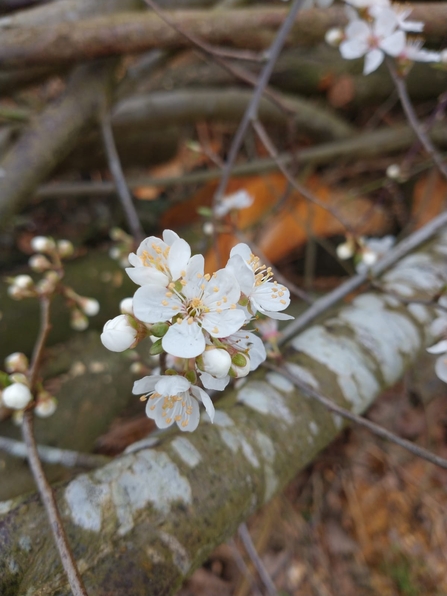
Cherry plum blossom – Ellen Shailes
Red deer prints
Will Cranstoun, West Suffolk Reserves Manager, came across this well demarked red deer slot at Lackford Lakes this week. The red deer is the UK's largest deer and has very large broad hoof prints around 70mm wide and usually parallel. Distribution in Suffolk is across the county with higher populations found on the coast between the Alde and Blyth estuaries and in the Brecks. Although we give this slot the ‘thumbs up’ Will is placing his finger within the frame to give you an indication of comparative size. Top tip Will!
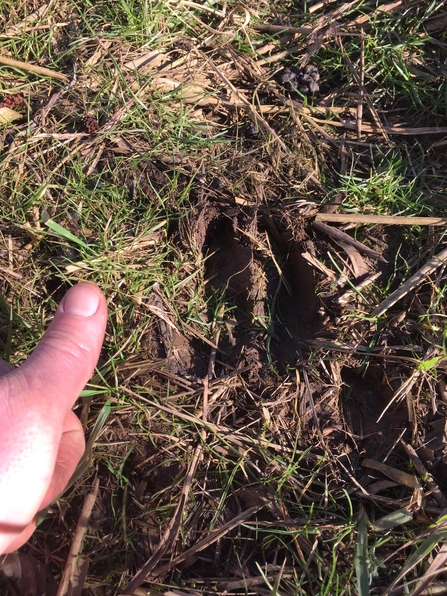
Red deer slot at Lackford Lakes – Will Cranstoun
Magnificent misty morning
Dan Doughty, Assistant Warden, captured these stunning misty scenes at Oulton Marshes.
Feet of a different kind
The colt’s-foot is one of the first wild flowers to emerge in spring. Congratulations to Joe Bell-Tye, West Suffolk Reserves Assistant on this find at Lackford Lakes. Joe said ‘these bright, yellow daisies grow in a range of habitats with open or disturbed ground, including arable land, waste land, shingle and scree, even landslips. The single flowers are held on scaly, crimson stems. As these start to die back, flat-fans of dark green leaves appear. These leaves are silver-white on their undersides.’
Other vernacular names for colt's foot include disherlagie, dishylaggie, tushies and cleats. Historically the plant has been used as a remedy for coughs and colds and long been used to make preparations to soothe sore throats.
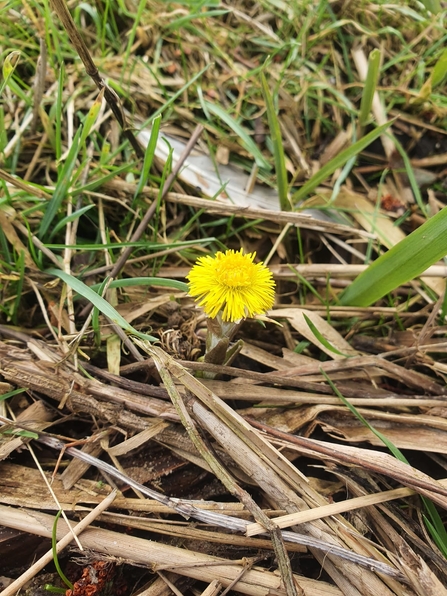
Colt’s foot at Lackford Lakes – Will Cranstoun


